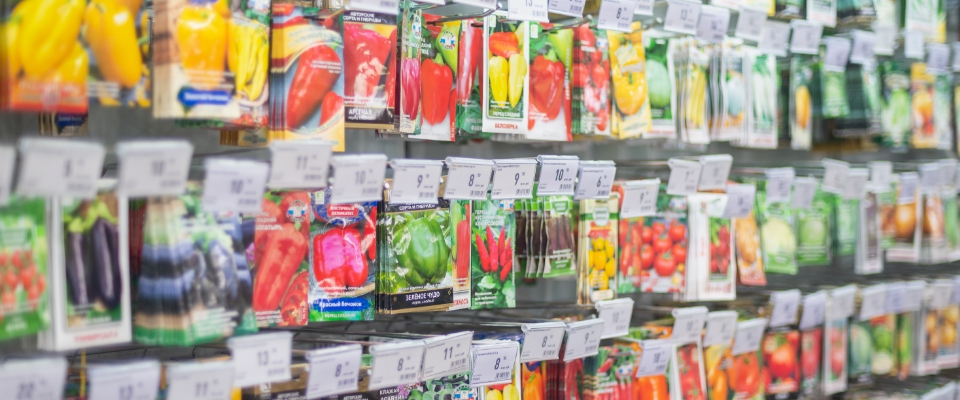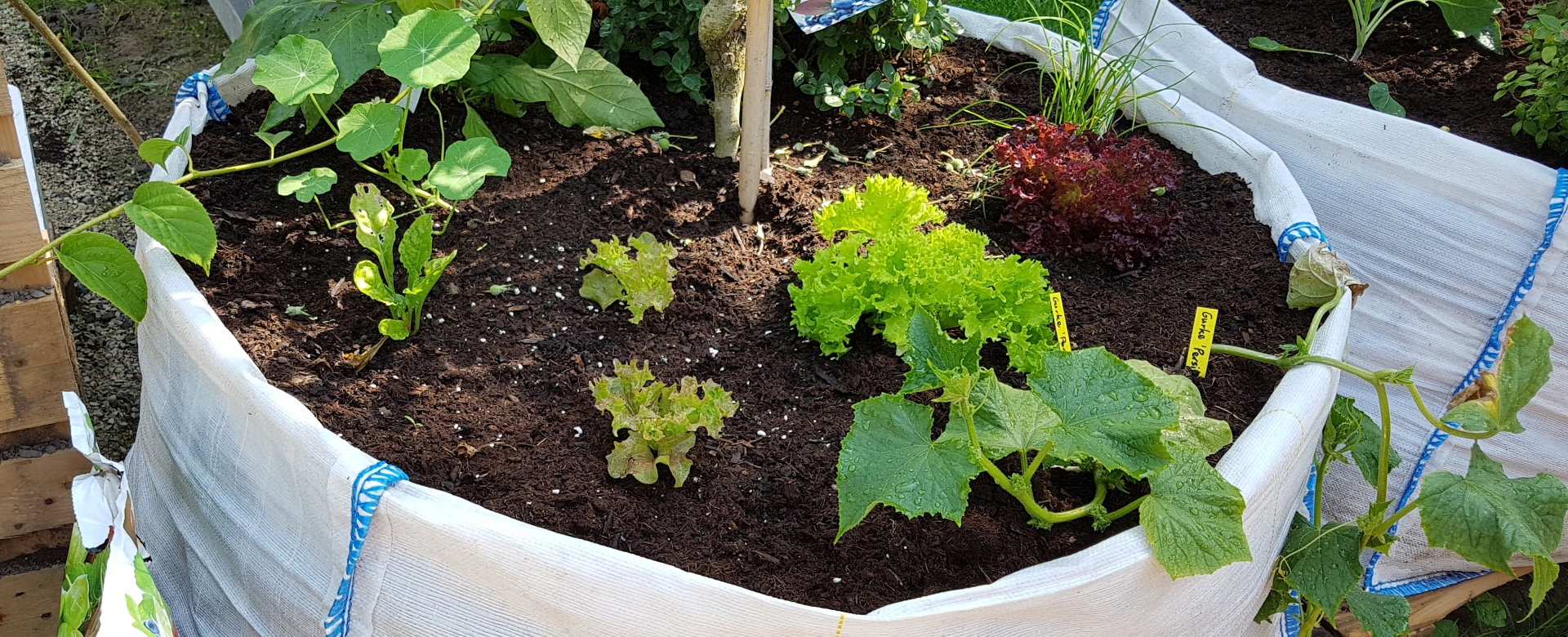Seeds make or break the growing season. A bad batch or mislabeled seeds (Peppergate, anyone?) can completely change your harvest.
But although they play a vital role, they’re often overlooked. Many have questions like: How many seeds do I need to grow a plant? How many seeds do I add per hole? Or what seeds should I use?
We wanted to dispel some of the myths about seeds. And uncover the secrets to choosing and using the right number of seeds. We’ve got insights on:
- Germination rate: The percentage of seeds that sprout, revealing the viability of your seeds and the effectiveness of your growing conditions.
- Seed size and its impact: Larger seeds pack more punch, while tiny ones require specific attention for successful germination.
- Plant variety preferences: Different seeds have unique needs, from spacing to light requirements.
- Environmental factors: Light, temperature, and moisture play crucial roles in triggering and supporting seed growth.
- Seedling selection: Choosing the strongest and healthiest seedlings ensures your plants thrive.
Keep reading to gain the confidence to sow your seeds with intention.
What Is Germination Rate?

Every seed packet contains dozens of seeds. You might be thinking: Do I need to plant all of them?
The truth is not every seed will become a plant. The germination rate refers to the percentage of seeds that successfully sprout. Some plants like melons have high germination rates. Others, like wildflowers, have low rates. Knowing the germination rate for a plant’s seeds will help you determine how many you need to plant.
Germination Rate Formula
There’s an easy way to quantify this with the germination rate formula:
Germination Rate (%) = (number of seeds germinated / total number of seeds sown) x 100
The germination rate formula provides a snapshot of viability. A high germination rate indicates healthy, vigorous seeds and favorable growing conditions. A low rate suggests potential issues that need to be addressed.
The good news: There’s a lot you can do to influence germination rates. We’ll touch on some of that in the following sections.
The Role of Seeds in the Germination Process
Seeds are packed for a season. Generally, the fresher the seed, the more viable it is. Freshness has a major influence on viability rate, because the seed plays an important role in germination.
Here’s an overview:
- Energy – Seeds are like mini pantries. They pack a supply of nutrients that fuel initial plant growth. This is a key reason why freshness is important; fresher seeds tend to have a larger supply of nutrients.
- Embryonic Marvels – Seeds contain the plant embryo, a mini plant waiting to unfurl. As seeds age, they dry out, which diminishes the viability of the embryo.
- Seed Coating – The seed coat offers protection for the embryo from environmental conditions and temperature fluctuations. As the shell dries out, some of this protective power diminishes.
Ultimately, external factors play a crucial role in triggering germination.
But if you start with bad seeds, growing conditions don’t matter. So, Tip #1 is: Start with the freshest seeds you can find. Generally, if they’re packed for the current season, you’re good to go.
What Factors Affect Seed Germination and Growth?
Planting seeds seems so simple, and often (if the conditions are right), it is. You just sow, and the plants grow.
But if you know the factors that influence plant growth, you will significantly increase your chances of success. First, think about these factors:
1. Seed Germination Rate
We’ve touched on how you can use germination rate to estimate the percentage of seeds likely to sprout. Here’s how you can use this information:
- Planning Your Seed Count: Knowing the expected germination rate helps you determine how many seeds to plant. Therefore, if you want 2 plants, and the average germ rate is 50%, you will need to plant 4 seeds.
- Solve Issues – After you sow seeds, a low germination rate may signal problems with storage, planting or growing conditions. If germination rate is far below average, you might experiment with different growing conditions or determine if there was an unexpected change in growing conditions.
Germination Rates Examples
- High Germination Rate (85-95%): Melons, corn, beans – these require fewer seeds per planting due to their high success rate.
- Moderate Germination Rate (70-80%): Lettuce, carrots, spinach – these benefit from thinning to ensure healthy spacing.
- Lower Germination Rate (50-65%): Parsley, wildflowers – these may require additional attention to planting depth, light exposure, or stratification techniques.
2. Seed Size and Germination
Looking for easy plants to grow? Choose ones with large seeds. In fact, seed size strongly influences germination rates. This is because larger seeds (corn, beans and peas) store more nutrients, and therefore, may germinate readily under even less-than-ideal conditions.
Smaller seeds have limited reserves. They require very specific conditions for successful germination. Examples include carrots, herbs, and wildflowers.
3. How Many Seeds to Plant?

Finding the sweet spot for seed number balances efficiency with successful germination. Here’s how many seeds to use for different plant types:
Fruits
Fruits generally require fewer seeds due to their larger size and slower growth:
- Melons (watermelon, cantaloupe): Sow 2-3 seeds per hill, thin to 1 strongest seedling after true leaves appear.
- Peppers: Sow 2-3 seeds per pot, thin to 1 strongest seedling after the first true leaves develop.
- Tomatoes: Sow 2-3 seeds per pot, thin to 1 strongest seedling once true leaves emerge.
Vegetables
Vegetables vary in their seed size and germination rates, requiring different approaches:
- Leafy greens (spinach, lettuce): Broadcast seeds thinly in rows or pots, thin as needed to prevent overcrowding.
- Root vegetables (carrots, beets): Sow seeds thinly in rows, thin as needed to allow for proper root development.
- Brassicas (broccoli, cauliflower): Sow 2-3 seeds per pot, thin to 1 strongest seedling once true leaves appear.
Herbs
Most herbs benefit from thinning to prevent overcrowding and encourage healthy growth:
- Basil: Sow seeds thinly in rows or pots, thin to 6-8 inches apart after true leaves develop.
- Parsley: Sow seeds thinly in rows, thin to 6-8 inches apart once seedlings have established.
- Cilantro: Sow seeds thinly in rows, thin to 4-6 inches apart after true leaves appear.
Flowers
Flower seed size and germination rates vary greatly, necessitating different sowing strategies:
- Large-flowered (sunflowers, zinnias): Sow 2-3 seeds per pot, thin to 1 strongest seedling after true leaves develop.
- Tiny-flowered (cosmos, marigolds): Broadcast seeds thinly, thin as needed to prevent overcrowding.
- Wildflowers: Follow specific instructions for each variety, as some require cold stratification (exposure to cold temperatures) before germination.
Seedling Selection: Choosing Your Champions

Germination is just the first hurdle in the journey of a successful plant. Once your seeds have sprouted, selecting the strongest and healthiest seedlings becomes crucial for ensuring a thriving garden.
Thinning seedlings is one of my least favorite gardening activities. But it’s absolutely necessary. If you don’t thin, your plants will compete for resources, overcrowd, and will not grow as rigorously.
Here are some key factors to consider when thinning your:
1. Appearance
Look for your strongest seedlings. Use these criteria:
- Sturdy stems: Opt for seedlings with thick, upright stems, avoiding those that are spindly or leaning. This indicates strong root development and better support for future growth.
- Healthy leaves: Look for seedlings with vibrant green leaves, free from discoloration, spots, or wilting. Yellowing or curling leaves can signify nutrient deficiencies, pests, or disease.
- Even growth: Choose seedlings with consistent growth across all parts. Avoid those with unevenly developed stems, leaves, or buds, as these may have struggled during germination and may grow weaker.
2. Development
Consider each seedling’s stage of development. Look at these factors:
- Growth rate: Avoid those that are lagging behind or appear stunted, as they may struggle to compete with their stronger peers.
- True leaves: Choose the ones with well-formed, healthy true leaves. This indicates proper nutrient uptake and photosynthesis.
3. Technique
Use the proper techniques for culling your seedlings. Here are some tips:
- Timing: Thin your seedlings at the appropriate stage. Early thinning allows weaker seedlings to be removed without disturbing the stronger ones.
- Technique: Use sharp scissors to carefully snip unwanted seedlings at the base. Avoid pulling them out, as this can damage the roots of surrounding seedlings.
Wrapping Up
You want to grow a more vibrant garden? Rethink your seeds! For such a small ingredient, they play a monumental role in your success.
But just remember these key facts:
- Fresh seeds are best and will germinate at higher rates.
- Larger seeds are easier to grow.
- Knowing the average germination rate for your seeds will help you choose the right amount to plant.
- Beyond seed quality, germination conditions are the second most important factor.
There you have it. If you choose easy-to-germinate seeds, and get the growing conditions just about right, you’ll have good success.
Find your organic growing supplies at Homegrown Outlet. Visit a location today for hydroponic growing supplies, garden tools, soil and more.
FAQs
There are several important factors for seed germination. First, choose fresh, quality seeds. This is important, as bad seeds will reduce your success. Then, the growing conditions need to be just right (moisture, warmth, and sowing depth).
The four things seeds need to germinate are:
1. Moisture: As mentioned above, water is essential for activating the growth processes within the seed.
2. Warmth: Seeds need a specific temperature range to germinate optimally.
3. Oxygen: Germinating seeds require oxygen for respiration.
4. Darkness (sometimes): Some seeds, particularly light-sensitive ones, require darkness for germination. Light exposure at the wrong stage can inhibit their growth.
The number of seeds you should plant together depends on several factors, including:
- Seed size and germination rate: Larger seeds with higher germination rates require fewer seeds per planting. Tiny seeds with lower germination rates may need more.
- Plant type: Some plants naturally grow more densely than others. Check specific planting instructions for your chosen variety.
- Desired plant density: Do you want individual plants spaced out, or a denser cluster effect?
- Thinning: Many plants require thinning after germination to prevent overcrowding and ensure healthy growth. Consider this when determining how many seeds to sow.
It's generally recommended to plant slightly more seeds than you want plants, as not all seeds will germinate successfully. You can always thin seedlings later to achieve the desired spacing.
No, only one plant can grow from a single seed. However, there are a few exceptions.
No, you typically do not need to plant the entire packet of seeds. Most seed packets contain more seeds than you need for a single planting, even if you factor in thinning. Planting too many seeds can lead to overcrowding and competition for resources, hindering healthy growth.




